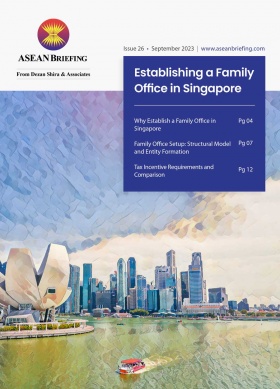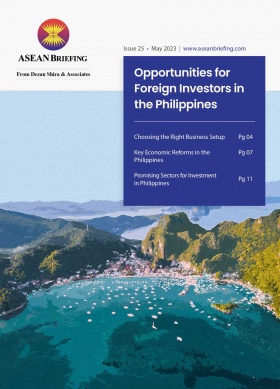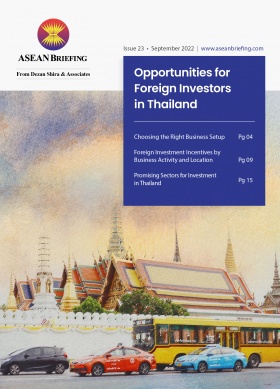Malaysia’s New Transfer Pricing & APA Rules
The Ministry of Finance in Malaysia has released two new rules governing transfer pricing (TP) norms in the country: the Income Tax (Advanced Pricing Arrangement) Rules 2023 and the Income Tax (Transfer Pricing) Rules 2023. Both sets of rules replace prior versions of the rules, released in 2012.
Among the key changes to the rules are new rules to when a company can enter into bilateral or multilateral APAs, changes to the application process for APAs, and changes to the arm’s length pricing mechanisms.
The new rules are applicable for the 2023 year of assessment (YA) (that is, the financial year ending on or after January 1, 2023).
In this article, we outline some of the main changes in the new APA and TP rules and discuss how they may impact companies in Malaysia.
Background: What are Malaysia’s APA and IT (TP) rules?
An Advanced Pricing Arrangement (APA), sometimes called an Advanced Pricing Agreement, is a tax treaty between a taxpayer and a tax authority that establishes an agreed transfer pricing methodology for a set of transactions over a specified period. The purpose of an APA is to provide certainty to the taxpayers with regard to the tax authorities’ transfer pricing rules, thereby reducing the risk of disputes with the tax authorities over the transfer pricing.
APAs were first introduced in Malaysia in 2009, with the addition of Section 138(c) to the Income Tax Act, which introduced provisions associated with negotiating and concluding APAs by the Malaysian taxpayer with the IRBM. In May 2012, the Income Tax (Advance Pricing Arrangement) Rules 2012 were released, providing additional clarity on the implementation of APAs.As noted in Budget 2009, the primary motive for introducing the APA regime in Malaysia was to provide certainty on pricing issues for inter-company trades within a group and to ensure that the tax framework is transparent and business-friendly.
Malaysia’s transfer pricing regulations are in line with the OECD Transfer Pricing Guidelines, and therefore also adopt the arm’s length principle, as stated in Subsection 140A(2) of the Income Tax Act (ITA). The arm’s length principle is the principle whereby the price for a transaction agreed between two related parties (such as subsidiaries of the same company) should be comparable to that between two unrelated parties.
What are the new APA Rules?
Rules on unilateral, bilateral, and multilateral APAs
There are three different types of APAs: unilateral APAs, bilateral APAs (BAPAs), and multilateral APAs (MAPAs). A unilateral APA is an arrangement between a taxpayer and the Director General of Inland Revenue (DGIR), whereas a BAPA or MAPA is an arrangement between the relevant authorities of two or more governments.
Previously, companies in Malaysia could enter into any of these types of APAs with the IRBM regardless of the relationship between Malaysia and the overseas jurisdiction. However, under the APA Rules 2023, companies are only permitted to enter into a bilateral or multilateral APA if the overseas party to the APA is located in a jurisdiction that has signed an avoidance of double taxation agreement (DTA) with Malaysia.
Meanwhile, if the jurisdiction in which the overseas entity is located has not signed a DTA with Malaysia, the Malaysia-based company can only enter into a unilateral agreement with the IRBM.
Malaysia currently has active DTAs with 74 countries (although some are limited to certain industries).
Changes to APA processing rules
The new APA Rules make several changes to the processing rules for the APA application.
One of the key changes is lengthening the period in which a taxpayer has to submit an APA application to the Director General.
Under the APA Rules, a taxpayer must make a request in writing to the Director General for a pre-filing meeting in respect of an advance pricing arrangement 12 months before the first day of the proposed period covered by the APA.
The Director General must then notify the taxpayer within 14 days of the pre-filing meeting of whether they may proceed with the application for an APA. The new APA Rules have now extended the period in which the taxpayer must submit the application from just two months to six months from the date of receiving the notification from the Director General.
Meanwhile, the new APA Rules state that a taxpayer is required to submit the application for an APA renewal within two months after receiving the written go-ahead from the Director General. The previous rules did not have such a requirement.
The requirement for a taxpayer to request the Director General to renew an APA at least six months before its expiration remains unchanged.
Changes to the rollback of APA outcomes
The new APA Rules make several changes to the use and implementation of rollbacks of the APAs (where the terms and conditions of an APA are applied to previous YAs).
Under the new rules, rollbacks are only permitted for up to three YAs immediately preceding the covered period. They are also only applicable to BAPAs and MAPAs.
A taxpayer can request a rollback in the following circumstances:
- The proposed transfer pricing methodology is relevant to the resolution of the transfer pricing issues in the prior years’ assessment; and
- The particular facts and circumstances surrounding the prior YAs are substantially the same as those of the covered period, subject to verification on audit.
Meanwhile, rollbacks cannot be implemented if a tax audit has been conducted by the Director General on the prior YA, a voluntary disclosure for TP case has been submitted by the taxpayer for the prior YAs, the matter on which the APA is sought has been decided by the Special Commissioners or a court, or if the taxpayer has not submitted the amended tax computation for rollback years within 30 days from the date of signing the APA.
Changes to fees
The new APA Rules now require taxpayers to pay a non-refundable fee for an APA taxation. The fees for a normal APA application are:
- RM 5,000 (US$1,068) if the application is made within two months of receipt of the notification from the Director General
- RM 10,000 (US$2,137) if the application is made after two but before six months of receiving the notification.
- Any expenses determined by the Director General.
For a renewal application, taxpayers must pay RM 5,000 as well as any expenses determined by the Director General.
What are the new TP Rules?
Changes to arm’s length principle
The new TP Rules introduce a narrow “arm’s length range” defined as “a range of figures or a single figure falling between the value of 37.5 percentile to 62.5 percentile of the data set” used for benchmarking. If the price of a controlled transaction falls within this range, then it can be used as the arm’s length price (although the IRBM may still adjust the price within the arm’s length range if the transaction cannot properly be compared).
However, if the price of a controlled transaction falls outside this range, then the arm’s length price will be determined as the median of the arm’s length range, where “median” means the value at the midpoint of the arm’s length range.
Changes to documentation requirements
The new TP rules make substantial changes to the documentation requirements when a taxpayer applies for TP documentation.
First, TP documentation must be “contemporaneous”, meaning that the documents supporting the arm’s length nature of intercompany transactions must be prepared prior to the income tax return filing date. The date on which the contemporaneous transfer pricing documentation is completed must also be included in the documents.
Note that a taxpayer must also submit the contemporaneous TP documentation when undergoing the pre-filing procedures for an APA application.
The new TP rules also outline the TP documentation that must be provided, which is organized into three schedules:
- Schedule 1: information on the Multinational Enterprise Group
- Schedule 2: information regarding the person’s business
- Schedule 3: information and documents regarding a cost contribution arrangement
Changes the method to determine arm’s length price
The new TP Rules allow for more flexibility in choosing the method to determine an arm’s length price of a controlled transaction than the previous rules.
Whereas the 2012 rules required taxpayers to use certain methodologies depending on their circumstances, the new rules allow them to choose the most appropriate method applicable among the following:
- he traditional transactional method;
- The transactional profit method; or
- Any other method allowed by the Director General which provides the highest degree of comparability between the transactions.
However, taxpayers must still provide evidence to support the chosen method. Specifically, the chosen method must:
- Be supported by an explanation and reasons that the method selected and the profit level indicator are appropriate as a better approximation to determine the arm’s length price; and
- Be based on the facts and circumstances, including the economically relevant characteristics of the controlled transaction which has been accurately delineated.
In addition, the Director General may choose to replace the selected method with another method “ if he has reason to believe that the person’s selected method is not the most appropriate method in determining the arm’s length price”.
Transfer pricing considerations for foreign companies and MNCs in Malaysia
There are several things that taxpayers in Malaysia should note with regard to the changes in Malaysia’s APA and TP rules.
For instance, the new limitations to APA rollbacks will disqualify companies participating in the Special Voluntary Disclosure Programme (SVDP) 2.0 from applying rollbacks. In addition, companies should be aware of the changes to the timelines in the APA application and renewal processes, and adjust internal procedures accordingly.
Meanwhile, the new TP Rules requirements for contemporaneous documentation will also necessarily change the timeline for companies’ TP documentation and filing, requiring more meticulous planning. Moreover, additional documentation will also be required to back up the chosen method for determining the arm’s length price, increasing the administrative burden on companies.
All of these changes underscore the need for proactive compliance, strategic planning, and thorough evaluation of the impact on intercompany transactions and tax obligations for businesses in Malaysia.
About Us
ASEAN Briefing is produced by Dezan Shira & Associates. The firm assists foreign investors throughout Asia and maintains offices throughout ASEAN, including in Singapore, Hanoi, Ho Chi Minh City, and Da Nang in Vietnam, in addition to Jakarta, in Indonesia. We also have partner firms in Malaysia, the Philippines, and Thailand as well as our practices in China and India. Please contact us at asean@dezshira.com or visit our website at www.dezshira.com.
- Previous Article Potential Pact for EV Minerals Between U.S. and Indonesia
- Next Article Indonesia and Australia Sign MoU to Boost EV Collaboration







